Related Research Articles

A crinoline is a stiff or structured petticoat designed to hold out a skirt, popular at various times since the mid-19th century. Originally, crinoline described a stiff fabric made of horsehair ("crin") and cotton or linen which was used to make underskirts and as a dress lining. The term crin or crinoline continues to be applied to a nylon stiffening tape used for interfacing and lining hemlines in the 21st century.
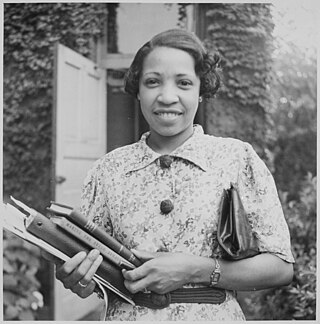
Lois Mailou Jones (1905–1998) was an artist and educator. Her work can be found in the collections of the Smithsonian American Art Museum, The Metropolitan Museum of Art, the National Museum of Women in the Arts, the Brooklyn Museum, the Museum of Fine Arts, Boston, Muscarelle Museum of Art, and The Phillips Collection. She is often associated with the Harlem Renaissance.
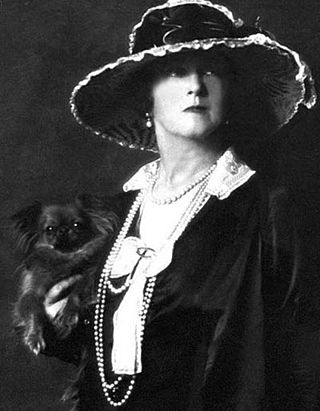
Lucy Christiana, Lady Duff-Gordon was a leading British fashion designer in the late 19th and early 20th centuries who worked under the professional name Lucile.
Lillian Pulitzer Rousseau was an American entrepreneur, fashion designer, and socialite. She founded Lilly Pulitzer, Inc., which produces floral print clothing and other wares.

Fashion of the 1980s was characterized by a rejection of 1970s fashion. Punk fashion began as a reaction against both the hippie movement of the past decades and the materialist values of the current decade. The first half of the decade was relatively tame in comparison to the second half, which was when apparel became very bright and vivid in appearance.
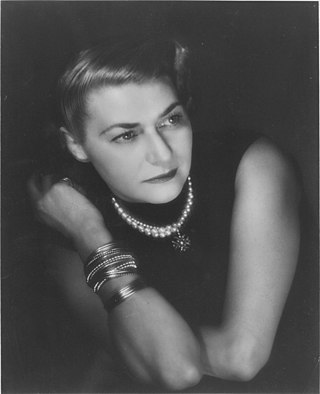
Pauline Trigère was a Franco-American couturière. She was famous in the United States during the 1950s and 1960s. She designed novelties such as the jumpsuit, the sleeveless coat, the reversible cape and the embroidered sheer bodice. She reinvented ready-to-wear fashion, matching form to function with bold prints and architectural silhouettes to create a distinctly modern female aesthetic. Trigère's loyal clients included Grace Kelly, Jacqueline Kennedy Onassis, Elizabeth Taylor, Kay Wiebrecht, and Evelyn Lauder.
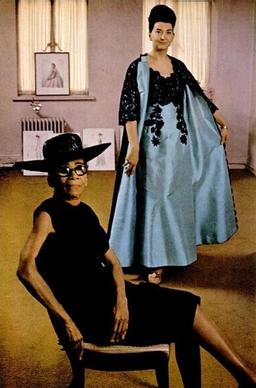
Ann Cole Lowe was an American fashion designer. Best known for designing the ivory silk taffeta wedding dress worn by Jacqueline Bouvier when she married John F. Kennedy in 1953, she was the first African American to become a noted fashion designer. Lowe's designs were popular among upper class women for five decades from the 1920s through the 1960s.

Elizabeth Hobbs Keckley was an American seamstress, activist, and writer who lived in Washington, D.C. She was the personal dressmaker and confidante of Mary Todd Lincoln. She wrote an autobiography.

In fashion, a sheath dress is a fitted, straight cut dress, often nipped at the waistline with no waist seam. When constructing the dress, the bodice and skirt are joined together by combining the skirt darts into one dart: this aligns the skirt darts with the bodice waist dart. The dress emphasizes the waist as its skirt portion is fitted. While the sheath dress can come in many patterns and lengths, it often is worn with short sleeves and reaches knee length.
Zelda Barbour Wynn Valdes was an American fashion designer and costumer. She is credited for designing the original Playboy Bunny waitress costumes.
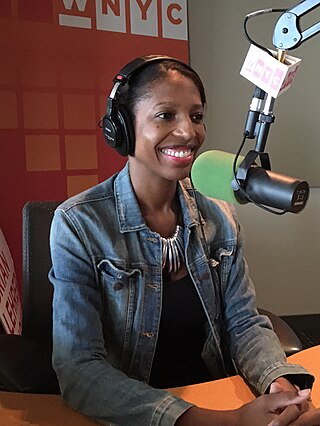
Keli Goff is an American producer, playwright, screenwriter and journalist. She is a contributor to various news outlets and has written for a number of popular television shows, including And Just Like That..., the reboot of the television series Sex and the City, and Mayor of Kingstown.
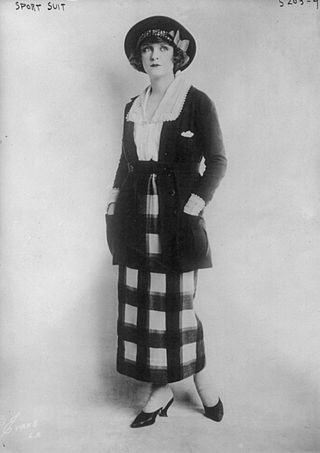
Sportswear is an American fashion term originally used to describe separates, but which since the 1930s has come to be applied to day and evening fashions of varying degrees of formality that demonstrate a specific relaxed approach to their design, while remaining appropriate for a wide range of social occasions. The term is not necessarily synonymous with activewear, clothing designed specifically for participants in sporting pursuits. Although sports clothing was available from European haute couture houses and "sporty" garments were increasingly worn as everyday or informal wear, the early American sportswear designers were associated with ready-to-wear manufacturers. While most fashions in America in the early 20th century were directly copied from, or influenced heavily by Paris, American sportswear became a home-grown exception to this rule, and could be described as the American Look. Sportswear was designed to be easy to look after, with accessible fastenings that enabled a modern emancipated woman to dress herself without a maid's assistance.

The dress worn by Jacqueline Bouvier for her wedding to John F. Kennedy in 1953 is one of the best-remembered bridal gowns of all time.

Lois K. Alexander-Lane was an African-American fashion designer who founded the Black Fashion Museum in 1979.
Rosemary Reed Miller was the owner of Toast and Strawberries, a landmark boutique in Washington, D.C. She was also a published author on African-American dressmakers from the nineteenth to the twenty-first centuries.
Fannie Criss, born in Cumberland County, Virginia, was a late 19th-century and 20th-century African-American designer who specialized in hand-made dresses and gowns for elite patrons in Richmond, Virginia and New York City, New York. Criss was a free-born child of her former enslaved parents, Samuel and Adeline Christ.
Jacqueline Kennedy: The White House Years was a 2001 exhibition that was presented by the Costume Institute at the Metropolitan Museum of Art. The event was timed to mark the 40th anniversary of her "emergence as America’s first lady." Organized by The Metropolitan Museum of Art and the John F. Kennedy Library and Museum, the exhibition was devoted to exploring the former First Lady's iconic style and impact on the fashion world.
Arthur Lee McGee was an American fashion designer. In 1957, he was the first African American designer hired to run a design studio on Seventh Avenue in the Garment District in New York City.
Hazel Rodney Blackman (1921–2014) was a Jamaican-born American fashion designer, quilter, and painter. She is best known for introducing African fabrics into American fashion in the 1960s and 1970s.

John Wesley Tann Jr was an American fashion designer. His clientele included Jacqueline Kennedy, Diahann Carroll, Carmen de Lavallade, Leontyne Price, Jennie Grossinger and several Miss Americas. His 1962 collection included several sari-inspired dresses.
References
- 1 2 3 4 Givhan, Robin (May 23, 2010). "Black Fashion Museum collection finds a fine home with Smithsonian". The Washington Post .
- 1 2 Burch, Audra D.S. (December 20, 1998). "D.C.'s Black Fashion Museum Traces Untold Story". Chicago Tribune.
- ↑ Trufelman, Avery (21 June 2023). "The Black Fashion Museum". Articles of Interest (Podcast). Retrieved 1 August 2023.
- ↑ Wright, Delores (2020-08-18). "Mrs. Lincoln's Inaugural Dressmaker Elizabeth Keckley |1/1980 | ROUTES". routes-mag.com. Retrieved 2024-03-27.
- ↑ "The Harlem Black Fashion Museum Founded By Ms. Lois Alexander Lane". Harlem World Magazine. 1 January 2017. Retrieved 9 August 2021.
- 1 2 3 "Black Fashion Museum Collection" . Retrieved 19 March 2016.
- ↑ Alleyne, Allyssia (23 December 2020). "The untold story of Ann Lowe, the Black designer behind Jackie Kennedy's wedding dress". CNN. Retrieved 9 August 2021.
- ↑ "Black Fashion Museum, African American Heritage Trail". Cultural Tourism DC. Retrieved 19 March 2016.